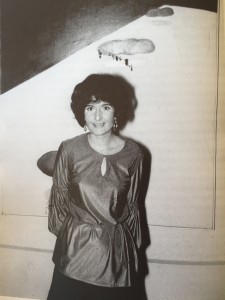Today Marina Abramović is known as “the grandmother of performance art,” due to her role as a pioneer of the use of performance art as a visual arts medium. Abramović began her career in performance in 1973, when she was already in her late twenties. Before that, as a student of painting at the Academy of Fine Arts in Belgrade, Abramović explored her interest in the body through paintings influenced by the abstract forms of Picasso (image 1). However, Abramović quickly found herself frustrated by the limits of expression in painting, and upon her exposure to the performance art medium while at school in Zagreb, her works became increasingly immaterial.


Abramović cites Marcel Duchamp and Dada (image 2), as well as the Fluxus movement, as being immensely influential on her work. In the 1960s George Maciunas started Fluxus, also directly influenced by Duchamp’s ready-mades, and Dada performances. Fluxus called for a living art outside the traditional gallery setting.
Fluxus and Dada both advocated art of experience, in which the embrace of chance, and an emphasis on audience interaction was crucial towards ridding the world of the “dead” art found in galleries and institutions.
“I have arrived at the conclusion that…the performance has no meaning without the public because, as Duchamp said it is the public that completes the work of art. In the case of performance, I would say that public and performer are not only complimentary but almost inseparable.”
-Abramović on the influence of Duchamp in her emphasis on audience interaction.
Yoko Ono is one such Fluxus artist who was working in New York in the 1970s, and whose emphasis on the role of the audience, and challenge of passive viewership, is paralleled in Abramović’s Rhythms series of 1973-74. In particular, Ono’s Cut Piece (1964) (image 3) and Abramović’s Rhythm 0 (1974) (image 4) emphasize a shared interest in the use of their own bodies as victims to chance to enforce active instead of passive viewership.


Since Abramović began her performance career forty years ago, she has become one of the most influential performance artists in history for her use of her own body as both the subject and the medium in performances which test her physical end mental endurance, while also emphasizing audience interaction.
For more information about Dada or Fluxus, follow the links below.


master bangun terbaik, master bangun berkualitas, struktur bangunan
Jasa arsitek berapa jogja